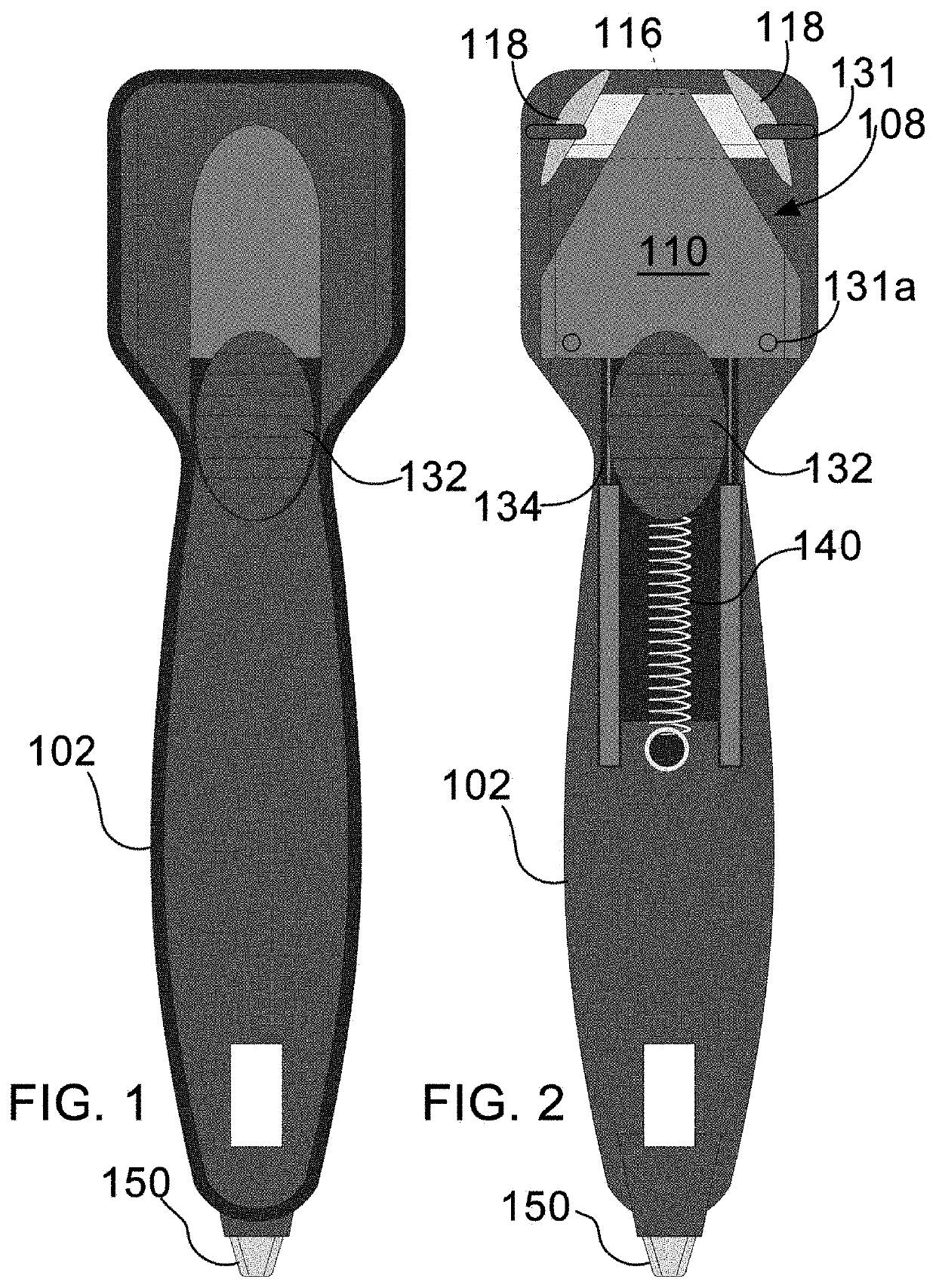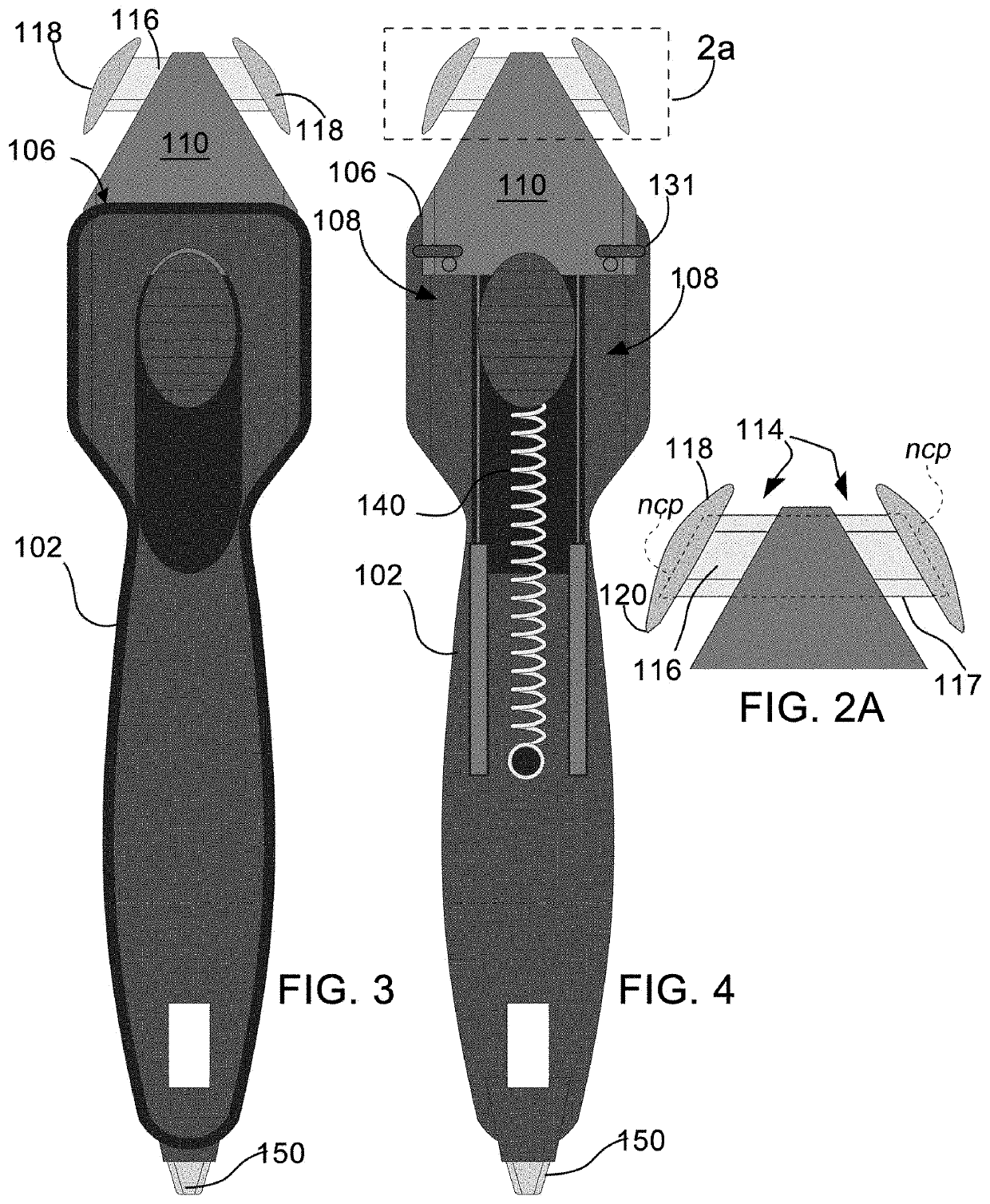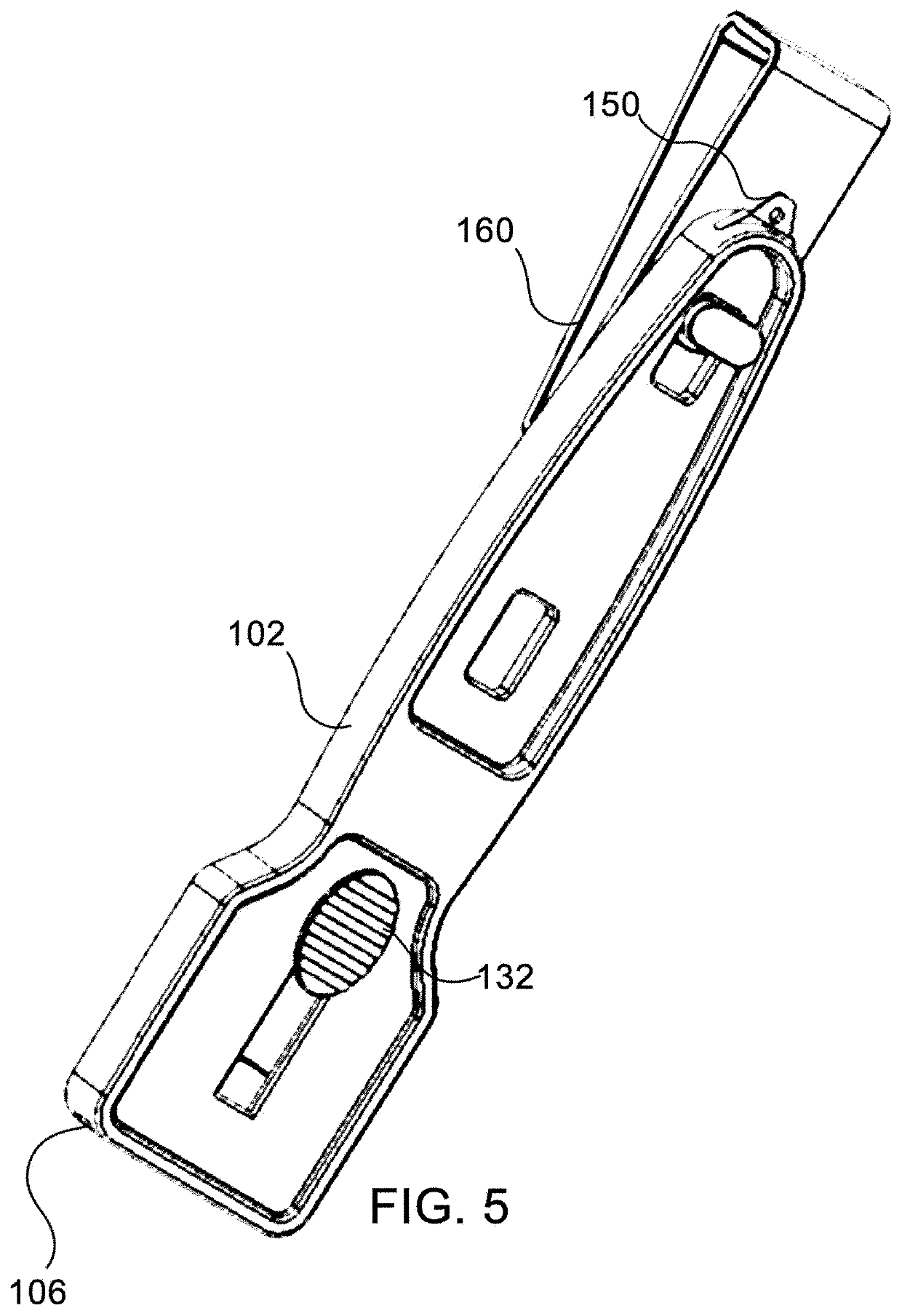Utility cutter with blade pair
a technology of utility cutters and blades, which is applied in the field of cutting rigid and semi-rigid materials, can solve the problems of insufficient sharpness to inadvertently puncture flesh, accidental actuation of utility cutters, and substantial danger to users, other persons, or valuable materials
- Summary
- Abstract
- Description
- Claims
- Application Information
AI Technical Summary
Benefits of technology
Problems solved by technology
Method used
Image
Examples
Embodiment Construction
[0075]The figures and following description illustrate and explain a utility cutter 100, which may be used to cut rigid or semi-rigid materials, such as, for example, corrugated board, cardboard or other paper products, rubber, plastic, Styrofoam, or any other appropriate material. The utility cutter 100 is typically a handheld device operated by either a left-handed or right-handed user with equal ease. In some implementations, the utility cutter 100 allows the user to carry, transport, or otherwise handle the cutter 100 in a safe position, whereby a sharpened blade 116 of the cutter 100 is enclosed or substantially enclosed within a protective housing or handle, and, an end of the blade 116 is capped with a guide 118 that includes pointed 120 and blunted portions. The user may, as appropriate, engage the cutter 100 into a material by engaging the guide 118 attached to the blade into the material. In some implementations, once engaged, the guide 118 may extend the blade 116 from a ...
PUM
 Login to View More
Login to View More Abstract
Description
Claims
Application Information
 Login to View More
Login to View More - R&D
- Intellectual Property
- Life Sciences
- Materials
- Tech Scout
- Unparalleled Data Quality
- Higher Quality Content
- 60% Fewer Hallucinations
Browse by: Latest US Patents, China's latest patents, Technical Efficacy Thesaurus, Application Domain, Technology Topic, Popular Technical Reports.
© 2025 PatSnap. All rights reserved.Legal|Privacy policy|Modern Slavery Act Transparency Statement|Sitemap|About US| Contact US: help@patsnap.com



